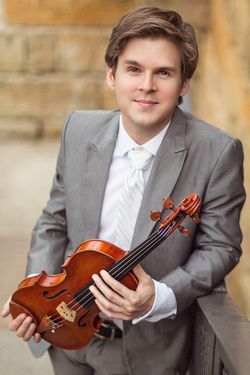To teachers and students, let me pose this question: When I mention “High 2” or “Low 2,” do those terms have any real or useful meaning? The fact that all intermediate and advanced players abandon those terms altogether should be a sign that "High 2, Low 2," is not much more than an awkward crutch.
As a student, the language of “high” and “low” is confusing. Why not say "close" and "far," or describe the shape of the finger itself (arched or extended)? It's also not memorable in any sense. As teachers, do you not feel that using those terms is an oversimplification? Does it really come anywhere close to describing what should be happening in the left hand? Do you really enjoy teaching with those terms? Personally, I would rather have my fingernails forcibly extracted than teach something I'm not 100% committed to.
Individual finger placement is the great challenge of beginning students and the frustration of many teachers. After much struggle, many students eventually succeed in approximating correct pitches, and then realize that they have attained little to no real organization or ease in the left hand. The fingers pop up and down at random. Excess tension is everywhere. What little fingerboard knowledge they have is a jumbled mess. It's usually a murky, case-by-case knowledge, not a fully formed, systematic knowledge.
Wouldn't it be great if there was a simple language to address both finger placement, efficiency, and balance of the entire hand?
Blocking the hand in groups of notes is not a new development. All professional players tend to group notes according to hand shapes. We've developed our hands in countless etudes and scales, often arriving at effective technique by accident, through great struggle, or simply at a very slow pace.
The real development I'm proposing is that hand shapes, blocking, can be taught from the very beginning of a student's development in an easy, intuitive way. The language used in teaching is often what makes or breaks effective teaching. If the 6 unique hand shapes do not have names, they will remain ambiguous or malformed. The language is the important part.
The history of Kung-fu in China goes back nearly 4000 years. In that sense, violin playing and teaching is still in its infancy. Kung-fu means “Intense work,” and doesn't have to refer to the martial arts at all. A person can have good Kung-fu in Cooking, Writing, or in Violin Playing. Hopefully, my use of the term is not an abuse of the term!
Rather than set up a structure based on the profound and deep work of traditional Kung Fu, I'm drawn much more to the extremely imaginative, quirky and fanciful display of kung fu in epic film series.
Kung-fu (and other martial arts) films are fantastic. One of my favorite series is called “The Heaven Sword and Dragon Saber.” I'm always struck by the spot-on naming of special fighting techniques. The Green Winged Bat King uses “Icy Palm” technique, freezing his enemies and sapping their strength. The Golden Haired Lion King uses “Lion's Roar” technique, deafening and confounding his enemies with a loud roar. What makes those moves memorable and impressive, is that their names adequately describe what the techniques actually look like.
Why on earth would you want to teach a student High 2 or Low 2, when you can teach them
Fox Hand, Rabbit Hand, Teacup Hand, Crab Claw, Bear Claw, and Closed Claw techniques?
The only real confusion beginning students have about the left hand is: Which fingers are close together, and which fingers are spread apart? What is my hand doing?
When a student plays something out of tune, or reads incorrectly, why not ask: "Yo! What hand shape are you using there? Are you sure? Really?!" The student's brain will activate. The Kung Fu hand shapes can be applied to any method or teaching style. It's simply a more accurate, intuitive description of what the left hand should be doing. My students are continually surprised that 99% of their playing is in Fox, Rabbit, Teacup, or Bear Claw positions.
I got a little carried away in this first post, but I felt it necessary to demonstrate how an advanced knowledge of the fingerboard can be developed through use of this naming system.
Click here for an introduction to the Hand Shapes.

 RSS Feed
RSS Feed